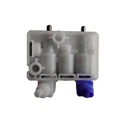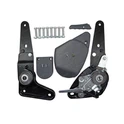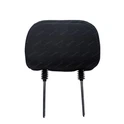As an experienced RV owner and parent, proper rv seat installation has always been a top priority for me. After much research and hands-on practice, I've learned the ins and outs of achieving a safe, secure fit in an RV's unique environment. Here, I'll share my knowledge on undertaking this important task yourself.

Can I Install A Motorhome Seat Myself?
Absolutely! With some studied preparation and patience, RV owners can correctly install car seats without professional assistance. The goal is understanding your vehicle's specifics, your child's needs and the nuances of different rv seats for sale models. Arm yourself with the manufacturer guides and some specialized RV tips. Also set aside ample time for adjustments to get it right. Take things slow and double-check for tightness. While it may take a few tries at first, you can certainly DIY a proper installation.
Info On Car Seats in RVs
RVs present unique factors to consider when securing rv driver seats, compared to standard automobiles. The lack of LATCH anchors in many seating positions means you'll often need to use seat belts instead. Be prepared to lock these for a tight fit. Also, test potential spots to ensure your child's seat doesn't block access to driving controls or emergency exits. Vibration from travel can cause loosening over time, so check tightness frequently. Lastly, avoid unreliable inflatable seat belts present in some RVs.
RV Requirements for Installing Driver And Passenger Seats
Through experience navigating rv bed seat installation in our RV, I've developed a list of must-haves:
● Seats with higher rear-facing weight limits for infants and convertible designs to maximize longevity.
● Models with easy push-on lower anchors and tethers when available.
● Lap-shoulder seat belts, and knowledge of how to lock retractable lap belts.
● Captain's chairs facing forward offer the ideal installation spots.
● Careful measurement of all spaces to find a good fit before purchasing.
● Patience and proper tightening with minimal movement per manufacturer guidelines.
RV Safety with Kids: Our Precautions
Traveling with little ones requires extra safety steps. We secure all furniture and stow loose objects that could become projectiles in a crash. Cabinet locks, edge bumpers and cord covers are also handy. I’ve also baby-proofed kitchen and bathroom spaces. Ensuring my children are properly buckled whenever the RV is moving is my main rule. And I set a reminder to double-check car seat tightness daily. Taking a few minutes for these precautions gives me peace of mind that my kids are safe.
Our Personal RV Safety Rules
Through trial and error RVing with children, my family has developed some key safety habits:
● Conducting regular emergency exit drills so the kids understand how to get themselves out if needed.
● Allowing them freedom to safely move around when parked, but proper car seat restraint whenever on the road.
● Installing secure gates at the top of stairs and doors leading outside.
● Keeping cleaning supplies and medications in high, locked cabinets.
● Using non-slip shower mats, and never leaving them unattended in the bathroom.
● Carefully learning how to operate RV appliances and establishing "no touch" areas.
● Double-checking that all exterior doors/hatches are closed and locked before moving the RV.
While RVing with kids poses unique challenges, preparation and consistent safety habits allow us to enjoy this lifestyle as a family. Proper use of car seats and securing the interior are our top priorities for keeping the kids protected.
Tips for Easier Installation
Through much hands-on experience, I've discovered several useful tips for streamlining rv sofa bed seat installation in RVs:
● If possible, choose your child's seat first, then select RV seats that will accommodate it.
● Look for models with lockoffs or locking clips to help achieve a tight seat belt fit.
● Use a pool noodle or rolled towel under and behind the car seat to eliminate excess slack.
● Wedge foam between the seat and RV wall as an anti-rebound device for added stability.
● Cut a section of non-slip shelf liner and place under the car seat to prevent sliding.
● Set a daily phone reminder to re-check for tightness on the go. Vibration often leads to loosening.
Rome wasn't built in a day, and achieving a properly secured rv seat takes patience. Set aside enough time for a multi-step process including assembly, careful belt threading and snug adjustments. Don't rush - it's worth spending the extra minutes to guarantee safety. If you feel frustrated, walk away for a bit then re-approach the task. Ask to double-check your work and give installation tips if needed.
While project at first, installing car seats in an RV will get smoother with practice. Keep your kids' safety as the top motivation and don't be afraid to ask questions from experts. With the right combination of tools, techniques and tenacity, you can correctly install their car seats yourself. Then it's time to hit the open road for a memorable family adventure!
More information about RV seats, Contact YSR Seating Manufacturer:







